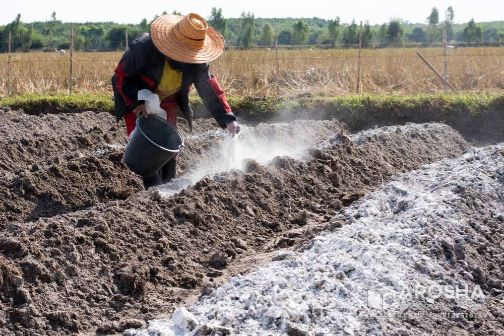
Managing Soil Salinity
Soil salinity is a significant environmental issue that affects a large portion of cultivatable lands worldwide, posing a serious challenge to agricultural productivity. Elevated salinity levels can limit the growth of many agronomic and horticultural crops, leading to reduced yields and economic losses for farmers.
Various strategies have been employed over the years to mitigate the effects of soil salinity stress, yet the effectiveness of some of these methods remains uncertain. Among these strategies, the application of agricultural gypsum and sulfur compounds has emerged as a promising approach to combat soil salinity.
Understanding Soil Salinity
Soil salinity refers to the concentration of soluble salts in the soil, which can hinder plant growth by affecting water availability and nutrient uptake. High salinity levels create osmotic stress, making it difficult for plants to absorb water even when it is present in the soil.
This condition can be exacerbated by factors such as inadequate irrigation practices, high evaporation rates, and poor land management, leading to an increase in salinized areas annually. It is estimated that more than 50% of arable land could be salinized by 2050 due to these ongoing challenges.
The Role of Agricultural Gypsum
Agricultural gypsum is recognized as an effective and economical method for addressing soil salinity stress. When applied to saline soils, gypsum helps improve soil structure and drainage while reducing sodium levels.
Research indicates that at a depth of 15-30 cm, soils often exhibit higher alkaline pH levels and increased electrical conductivity compared to surface layers. The application of agricultural gypsum significantly enhances these parameters, leading to improved soil health.
Benefits of Gypsum Application
- Reduction in Sodium Levels: Gypsum application leads to a substantial decrease in available sodium at deeper soil layers, which helps achieve a more suitable threshold for plant growth.
- Improvement in Soil pH: The use of gypsum can lower the pH of alkaline soils, making nutrients more available for plant uptake.
- Enhanced Soil Structure: Gypsum helps flocculate clay particles, improving soil aeration and water infiltration.
Nutrient Management in Saline Soils
Soils play a critical role in supporting plant growth by providing essential nutrients. However, many soils suffer from nutrient deficiencies or contain harmful salts that can impede plant development. Saline and sodic soils require amendments to improve their quality for agricultural use. In particular, calcareous soils—characterized by high calcium carbonate content—can benefit significantly from gypsum application.
Characteristics of Calcareous Soils
Calcareous soils contain more than 10% calcium carbonate and typically exhibit a pH above 7. This alkaline environment can lead to nutrient deposition in tree trunks and branches rather than being available for root uptake. Consequently, managing calcareous soils through the use of gypsum not only addresses salinity issues but also enhances nutrient availability.
Strategies for Amending Saline Soils
In addition to gypsum application, several other strategies can be employed to improve saline soils:
- Leaching: This involves applying excess water to wash away salts from the root zone.
- Crop Rotation: Incorporating salt-tolerant crops can help manage salinity levels.
- Use of Organic Amendments: Adding compost or manure can improve soil structure and fertility.
- Improved Irrigation Practices: Techniques such as drip irrigation can minimize waterlogging and salt accumulation.
Conclusion
The management of soil salinity is crucial for sustaining agricultural productivity in affected regions. While various methods have been explored, the use of agricultural gypsum stands out as a cost-effective solution with multiple benefits for improving soil conditions.
As global challenges such as climate change continue to impact land productivity, adopting integrated approaches that combine chemical amendments with sustainable practices will be essential for ensuring food security and environmental health.

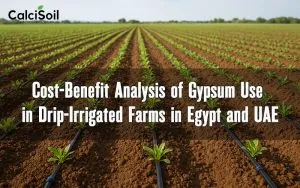

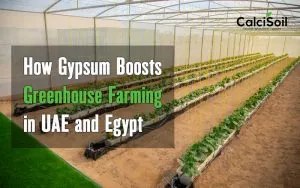

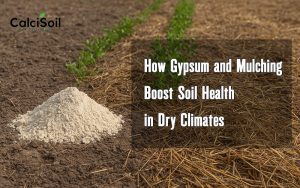
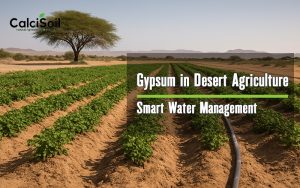

3 Responses
How much bags should split in one acr land
We recommend you to read this article. if you didn’t find your answer, let us know.